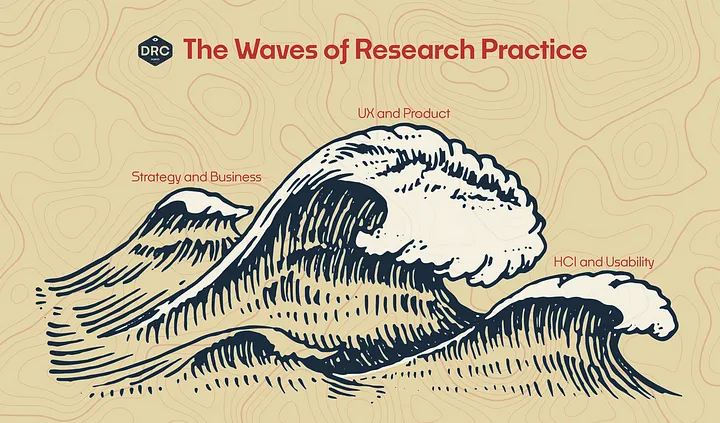The waves of research practice

The first wave of research, receding now, grew from academia. The current wave is cresting, ready to wash over software design and product management. And third-wave research will reach even higher, moving into product and organizational strategy.
Each wave inevitably consumes and builds upon the prior — they don’t end, but become the foundation on which the next wave of research and adjacent forms of higher-order value will be built.
This strategic view of research examines the work in terms of its evolution — how the skills, activities, and capabilities move from novel and uncharted territory into more industrialized and commodity forms of value. (We build on the foundation of Simon Wardley’s Wardley Map framework.)
For researchers on the path of practice, teams building research tools, and organizations employing research capability, these evolutionary stages are the grounding context for understanding and positioning research practice: how we invest in, develop, purchase, organize, deploy, and distribute the work. Let’s take a quick snapshot of each wave’s state-of-evolution as introduction.
Look at these waves as prevailing modes of thought-and-action in industry, with research as a set of adjacent and co-evolving practices. In each wave, research will shape itself differently, because in each wave the context it’s being deployed in is different.We go a bit deeper into each wave, now, looking at the forms of work that research co-evolves with, the state-of-play right now, and some of the major ideas that have shaped their evolution.Wave 1: 1980 to ~2030The first wave was borne of an academic view. Human-Computer Interaction (HCI) research considers users’ cognitive capabilities as they interact with systems, and the structure of those systems — from interface down to information architecture — attempting to optimize the flow of users accomplishing tasks, in order to meet goals.Ease-of-interaction (not design-of-interaction: wait for Wave 2) was the primary concern, built on a background of goals modeling and fine-grained interface-interaction predictions.
